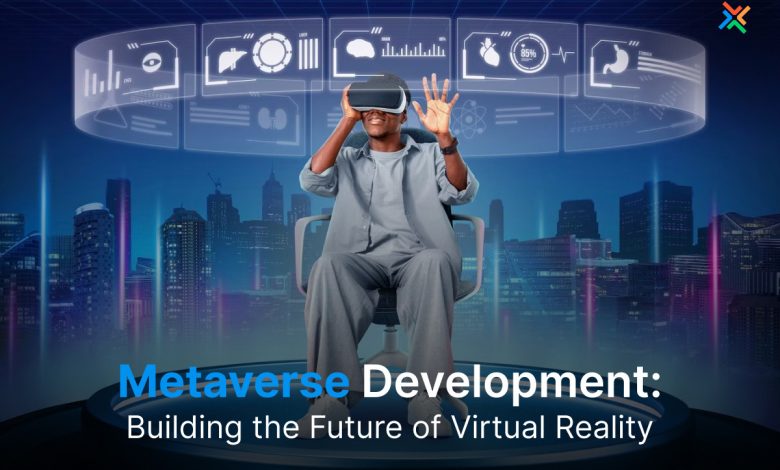Building the Metaverse: Challenges Ahead

Introduction: Understanding the Metaverse
The concept of the metaverse has captured global attention, inspiring visions of a digital universe where people can interact, work, and play in immersive virtual environments. Companies like Meta, Microsoft, and others are investing heavily in creating the infrastructure and technology needed for this new realm. However, building the metaverse involves many complex challenges. From technical issues to ethical questions, there are numerous hurdles to overcome before the metaverse becomes a mainstream reality.
Challenge 1: Technological Limitations
Creating an interconnected virtual world demands advanced technology. However, current technology struggles to meet the high demands of the metaverse.
1. Hardware Requirements
The metaverse requires powerful devices, like VR headsets, AR glasses, and high-performance computers. Unfortunately, these devices are expensive and can be uncomfortable for long-term use. Many people do not have access to the necessary equipment, which creates a barrier to entry.
2. Network Speed and Latency
A smooth metaverse experience relies on high-speed internet and low latency. The current global infrastructure cannot fully support this. In rural areas and developing countries, internet speeds often lag, creating an uneven experience. To make the metaverse accessible worldwide, internet infrastructure must improve significantly.
3. Processing Power and Graphics
The metaverse needs massive processing power to create realistic environments and interactive elements. Advanced graphics cards and CPUs are required, but these are costly and consume a lot of energy. As a result, tech companies face the challenge of balancing high-quality visuals with accessibility and sustainability.

Challenge 2: Interoperability and Standards
The metaverse aims to be a unified digital space, but creating interoperability between platforms is a complex issue.
1. Lack of Standard Protocols
Different companies are building their versions of the metaverse, each with unique protocols. For example, a user’s avatar in one platform may not be compatible with another. Establishing common standards for avatars, assets, and digital environments is essential for a seamless metaverse experience.
2. Collaboration Among Tech Companies
For a true metaverse to exist, companies must collaborate and agree on shared protocols. However, competing interests and differing business models make collaboration difficult. Many companies are reluctant to share their data and technologies, fearing a loss of competitive advantage.
3. Asset Portability
One key feature of the metaverse is the ability to carry digital assets, like avatars or items, across platforms. However, this requires complex programming and standardization. Until asset portability becomes a reality, users may feel restricted within specific platforms, limiting the metaverse’s full potential.
Challenge 3: Privacy and Security Concerns
With users spending more time in virtual environments, the metaverse raises new privacy and security issues.
1. Data Collection and Surveillance
The metaverse will likely collect vast amounts of personal data, from biometric information to behavioral patterns. This data can be used for personalization but also poses significant privacy risks. Users may feel as though they are constantly monitored, raising ethical concerns about data collection and usage.
2. Cybersecurity Risks
Virtual environments are vulnerable to cyber threats like hacking, phishing, and data breaches. Malicious actors could exploit vulnerabilities within the metaverse, leading to financial loss or identity theft for users. Ensuring robust cybersecurity measures is crucial to building trust within the metaverse.
3. User Identity and Protection
In a world where users interact with avatars, maintaining identity authenticity can be challenging. Impersonation, identity theft, and harassment may become prevalent without proper safeguards. Protecting user identities while ensuring freedom within the metaverse is a delicate balance to maintain.
Challenge 4: Legal and Regulatory Issues
The metaverse brings new legal and regulatory questions that governments and companies must address.
1. Intellectual Property Rights
In the metaverse, digital assets and creations become valuable, leading to questions about ownership and intellectual property rights. If someone creates artwork or a virtual item, they may want to retain ownership. However, enforcing these rights in a virtual environment is complex and will require new laws and regulations.
2. Jurisdiction and Governance
Since the metaverse is a global entity, determining jurisdiction for legal matters is difficult. A user could interact with others from different countries, leading to questions about which laws apply. Establishing a system of governance within the metaverse is essential to manage conflicts and uphold order.
3. Content Moderation
Content moderation is challenging in any online space, but it becomes even more complicated in the metaverse. As people interact in real-time, harmful content, harassment, and inappropriate behavior need to be monitored and managed. Developing effective moderation tools without infringing on free expression is a significant challenge.
Challenge 5: Ethical and Social Implications
The metaverse’s impact extends beyond technology, affecting society and raising ethical questions.
1. Impact on Mental Health
Immersive environments can affect mental health. Spending extended periods in virtual spaces may lead to social isolation, addiction, or detachment from reality. Research on the long-term mental health effects of VR and AR use is still in its early stages, making it difficult to predict the impact accurately.
2. Digital Divide and Access Inequality
Not everyone has access to the technology needed for the metaverse. High costs and infrastructure limitations could leave certain populations out, increasing the digital divide. Without initiatives to improve accessibility, the metaverse may exclude large segments of society, creating inequalities.
3. Ethical Use of AI and Automation
The metaverse will rely heavily on artificial intelligence (AI) for functions like personalization and content generation. However, AI also raises ethical concerns, such as biases in algorithms and potential loss of jobs due to automation. Responsible use of AI is necessary to prevent harmful consequences.

Challenge 6: Environmental Impact
Building and maintaining the metaverse requires considerable energy, which could impact the environment.
1. Energy Consumption
Running servers, data centers, and devices for the metaverse consumes significant energy. If the metaverse grows rapidly, its energy demand could increase substantially, contributing to carbon emissions. Companies need to explore sustainable energy sources and practices to reduce the environmental impact.
2. Electronic Waste
With the constant upgrade of devices, electronic waste is another concern. VR and AR hardware may need regular replacements, leading to more electronic waste. Developing recyclable or eco-friendly hardware solutions is essential for a sustainable metaverse.
The Road Ahead: Addressing Challenges
Despite these challenges, the potential of the metaverse is immense. As technology evolves, solutions may emerge to address current issues.
1. Advancements in Technology
Ongoing improvements in internet infrastructure, VR hardware, and AI may reduce technological barriers. Faster internet, cheaper devices, and optimized graphics processing could make the metaverse more accessible.
2. Collaborations and Standardization Efforts
Industry collaborations could lead to agreed-upon standards, enabling interoperability between platforms. Organizations like the Metaverse Standards Forum aim to create common protocols that allow smoother integration.
3. Ethical Frameworks and Regulation
Policymakers and tech leaders must work together to create ethical frameworks and regulations for the metaverse. Establishing guidelines on privacy, intellectual property, and content moderation will be crucial to protect users and maintain a safe digital space.
Conclusion: Moving Toward a Unified Metaverse
Building the metaverse is an exciting but challenging journey. From technological limitations to ethical concerns, there are many hurdles to overcome. Yet, as we address these challenges, the metaverse could transform how we live, work, and connect. By fostering collaboration, innovation, and ethical practices, the vision of a unified, accessible metaverse could become a reality. The road ahead may be complex, but with thoughtful planning and responsible development, the metaverse promises a new frontier filled with possibilities.




